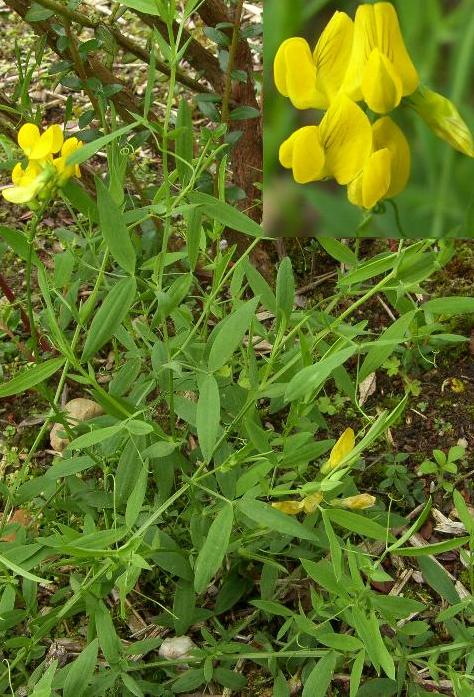Meadow VetchlingScientific Name: Lathyrus pratensis |
A perennial native to Europe and Asia it is a member of the Pea family, so fixes its own nitrogen in nodules on the roots. It spreads by seed and fine, white creeping roots. Found in damp meadows and hedgerows it scrambles through plants using tendrils for support.
Pairs of lanceolate grey-green leaves are held on stalks which extend to the tendrils which can be branched.
The yellow, pea-like flowers are held in racemes of four to twelve at the end of the square, hairless stems from May to August. The seeds develop in small pea-like pods, which turn black when mature.
It is not usually a garden weed and can be a welcome addition to a wildflower meadow. The fine creeping roots are difficult to remove completely by digging.
A systemic weedkiller such as Glyphosate is taken down into underground parts, so can be used at first or to clear out any regrowth after cultural methods have been used.
See also Common Vetch and Tufted Vetch
Follow these links for further details on Weeds, Weed Removal and Weed Prevention.
